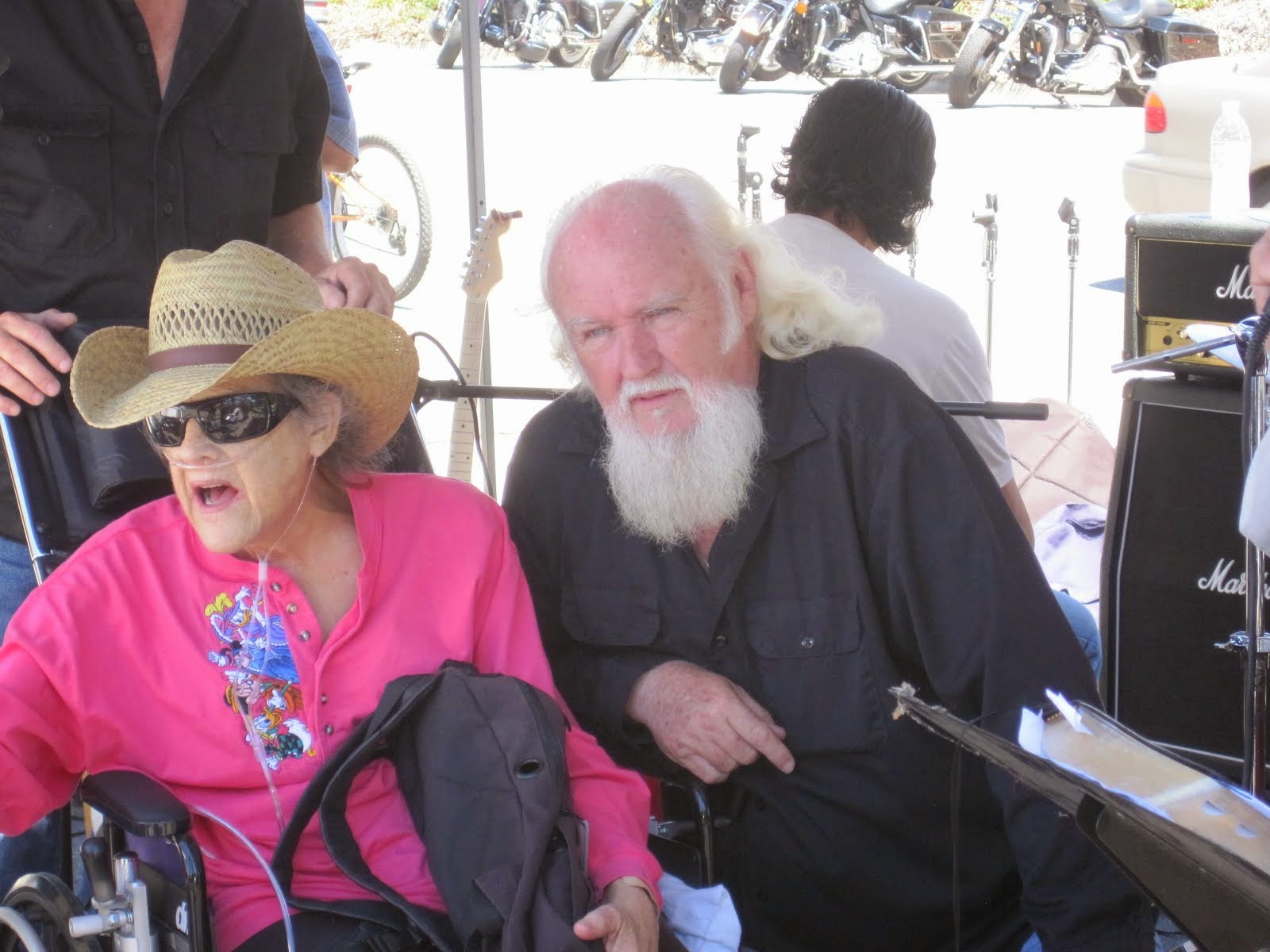OFF THE WIRE
http://www.clutchandchrome.com/news/news/federal-guidelines-battling-driver-distraction-a-motorcycle-gift
Federal guidelines battling driver distraction a motorcycle gift?
Written by Asia
| Motorcycle enthusiasts are getting some indirect support from U.S. Transportation Secretary Ray LaHood as he and his agency take a huge legislative leap against distracted drivers.
Arguably considered one of the greatest threats to riders everywhere, Secretary LaHood announced late last week the first-ever federally proposed guidelines to encourage automobile manufacturers to limit the distraction risk for in-vehicle electronic devices. The proposed voluntary guidelines would apply to communications, entertainment, information gathering and navigation devices or functions that are not required to safely operate the vehicle.
Issued by the Department's National Highway Traffic Safety Administration (NHTSA), the guidelines would establish specific recommended criteria for electronic devices installed in vehicles at the time they are manufactured that require visual or manual operation by drivers. The announcement of the guidelines comes just days after President Obama's FY 2013 budget request, which includes $330 million over six years for distracted driving programs that increase awareness of the issue and encourage stakeholders to take action.
"Distracted driving is a dangerous and deadly habit on America's roadways – that's why I've made it a priority to encourage people to stay focused behind the wheel," said Secretary LaHood. "These guidelines are a major step forward in identifying real solutions to tackle the issue of distracted driving for drivers of all ages."
Geared toward light vehicles (cars, SUVs, pickup trucks, minivans, and other vehicles rated at not more than 10,000 pounds gross vehicle weight), the guidelines proposed today are the first in a series of guidance documents NHTSA plans to issue to address sources of distraction that require use of the hands and/or diversion of the eyes from the primary task of driving.
In particular, the Phase I proposed guidelines recommend criteria that manufacturers can use to ensure the systems or devices they provide in their vehicles are less likely to distract the driver with tasks not directly relevant to safely operating the vehicle, or cause undue distraction by engaging the driver's eyes or hands for more than a very limited duration while driving. Electronic warning system functions such as forward-collision or lane departure alerts would not be subject to the proposed guidelines, since they are intended to warn a driver of a potential crash and are not considered distracting devices.
"We recognize that vehicle manufacturers want to build vehicles that include the tools and conveniences expected by today's American drivers," said NHTSA Administrator David Strickland. "The guidelines we're proposing would offer real-world guidance to automakers to help them develop electronic devices that provide features consumers want—without disrupting a driver's attention or sacrificing safety."
The proposed Phase I distraction guidelines include recommendations to:
Reduce complexity and task length required by the device;
Limit device operation to one hand only (leaving the other hand to remain on the steering wheel to control the vehicle);
Limit individual off-road glances required for device operation to no more than two seconds in duration;
Limit unnecessary visual information in the driver's field of view;
Limit the amount of manual inputs required for device operation.
In-car electronics, such as Cadillac's CUE system, would have new limitations under proposed federal anti-distraction guidelines.
The proposed guidelines would also recommend the disabling of the following operations by in-vehicle electronic devices while driving, unless the devices are intended for use by passengers and cannot reasonably be accessed or seen by the driver, or unless the vehicle is stopped and the transmission shift lever is in park.
Visual-manual text messaging;
Visual-manual internet browsing;
Visual-manual social media browsing;
Visual-manual navigation system destination entry by address;
Visual-manual 10-digit phone dialing;
Displaying to the driver more than 30 characters of text unrelated to the driving task.
NHTSA is also considering future, Phase II proposed guidelines that might address devices or systems that are not built into the vehicle but are brought into the vehicle and used while driving, including aftermarket and portable personal electronic devices such as navigation systems, smart phones, electronic tablets and pads, and other mobile communications devices. A third set of proposed guidelines (Phase III) may address voice-activated controls to further minimize distraction in factory-installed, aftermarket, and portable devices.
The Phase I guidelines were published in today's Federal Register and members of the public will have the opportunity to comment on the proposal for 60 days. Final guidelines will be issued after the agency reviews and analyzes and responds to public input.
NHTSA will also hold public hearings on the proposed guidelines to solicit public comment. The hearings will take place in March and will be held in Los Angeles, Chicago, and Washington D.C.
skip to main |
skip to sidebar




Bill & Annie

Art Hall & Rusty


NUFF SAID.......


































































OOHRAH

ONCE A MARINE,ALWAYS A MARINE

GIVING BACK


MOUNT SOLEDAD














BIKINI BIKE WASH AT SWEETWATER










FRIENDS





BILL,WILLIE G, PHILIP










GOOD FRIENDS


hanging out

brothers


GOOD FRIENDS

Good Friends

Hanging Out




Bill & Annie
Art Hall & Rusty
Art Hall & Rusty


NUFF SAID.......



















NUFF SAID......



























Mount Soledad




BALBOA NAVAL HOSPITAL
RUSTY DANNY

ANNIE KO PHILIP

PHILIP & ANNIE

OUT & ABOUT

OOHRAH...

OOHRAH
ONCE A MARINE,ALWAYS A MARINE

ONCE A MARINE,ALWAYS A MARINE
American Soldier Network GIVING BACK

GIVING BACK
CATHY & BILL
PHILIP & DANNY & BILL

MOUNT SOLEDAD
bills today
EMILIO & PHILIP
WATER & POWER
WATER & POWER
bootride2013



BIKINI BIKE WASH AT SWEETWATER







ILLUSION OPEN HOUSE

FRIENDS


GOOD FRIENDS



BILL,WILLIE G, PHILIP









GOOD FRIENDS

GOOD FRIENDS
Friends
- http://www.ehlinelaw.com/losangeles-motorcycleaccidentattorneys/
- Scotty westcoast-tbars.com
- Ashby C. Sorensen
- americansoldiernetwork.org
- blogtalkradio.com/hermis-live
- davidlabrava.com
- emiliorivera.com/
- http://kandymankustompaint.com
- http://pipelinept.com/
- http://womenmotorcyclist.com
- http://www.ehlinelaw.com
- https://ammo.com/
- SAN DIEGO CUSTOMS
- www.biggshd.com
- www.bighousecrew.net
- www.bikersinformationguide.com
- www.boltofca.org
- www.boltusa.org
- www.espinozasleather.com
- www.illusionmotorcycles.com
- www.kennedyscollateral.com
- www.kennedyscustomcycles.com
- www.listerinsurance.com
- www.sweetwaterharley.com

Hanging out

hanging out
Good Friends

brothers
GOOD FRIENDS

EMILIO & SCREWDRIVER

GOOD FRIENDS
Danny Trejo & Screwdriver

Good Friends
Navigation
Welcome to Bikers of America, Know Your Rights!
“THE BIKERS OF AMERICA, THE PHIL and BILL SHOW”,
A HARDCORE BIKER RIGHTS SHOW THAT HITS LIKE A BORED AND STROKED BIG TWIN!
ON LIVE TUESDAY'S & THURDAY'S AT 6 PM P.S.T.
9 PM E.S.T.
CATCH LIVE AND ARCHIVED SHOWS
FREE OF CHARGE AT...
BlogTalkRadio.com/BikersOfAmerica.
Two ways to listen on Tuesday & Thursday
1. Call in number - (347) 826-7753 ...
Listen live right from your phone!
2. Stream us live on your computer: http://www.blogtalkradio.com/bikersofamerica.
A HARDCORE BIKER RIGHTS SHOW THAT HITS LIKE A BORED AND STROKED BIG TWIN!
ON LIVE TUESDAY'S & THURDAY'S AT 6 PM P.S.T.
9 PM E.S.T.
CATCH LIVE AND ARCHIVED SHOWS
FREE OF CHARGE AT...
BlogTalkRadio.com/BikersOfAmerica.
Two ways to listen on Tuesday & Thursday
1. Call in number - (347) 826-7753 ...
Listen live right from your phone!
2. Stream us live on your computer: http://www.blogtalkradio.com/bikersofamerica.
Good Times
Hanging Out

Key Words
- about (3)
- contact (1)
- TENNESSEE AND THUNDER ON THE MOUNTAIN (1)
- thinking (1)
- upcoming shows (2)
Blog Archive
-
▼
2012
(4602)
-
▼
February
(420)
- CA - Biker Gang Members Fight Customer At Taco Shop
- VMMC Special Event
- CA - Information From Senator Anderson Concerning ...
- MARINE SUPPORT PARTY
- Flash Colorado River Vagos Bust
- AUSTRALIA - Labor pledges bikie law support
- NEVEDA - The Sparks Duel
- CALIFORNIA - Ex-Hells Angel member to be charged i...
- USA - FBI Turns Off Thousands of GPS Devices Afte...
- CALIFORNIA - HA a club, Vagos a gang
- NV casino shootout legal jousting; gangs or clubs?
- NEW YORK - Rochester HA Case
- CALIFORNIA - Prosecutors Want to Make Ex-Cop Do Time
- HERE WE GO....Idaho OKs Seizure of Protesters' Pro...
- Alabama - Motorcycle club member, co-defendant sen...
- WASHINGTON - Biker convicted in ‘no-body’ Ravensd...
- USA - Critics of Indefinite Detention Gain Tractio...
- Color of Law Abuses
- Do you have to show an ID to a cop? How do you ref...
- USA - Biker Tax break?
- Neveda - Las Vegas - Helmet law enforcement lawsui...
- Retired SDPD Officer Says He Was Victim Of Racial ...
- CA - Biker Gang Fugitive Surrounded by Police at ...
- The Prospect
- CALIFORNIA - Steve Ruiz In Custody
- USA - Drones with an eye on US public cleared to f...
- CALIFORNIA - Keith Silva Sentenced
- CA - The Ablett Verdict Coverage
- Freedom says, CHECK IT OUT
- Calif. county's marijuana plant zip ties become mo...
- USA - You Go To Prison, They Get Paid.... W.T.F.
- OREGON - Canby man pays 'hit man' to attack judge,...
- Question of the Day: Should Michigan repeal its mo...
- Hells Angel arrested in killing of fellow gang mem...
- CALIFORNIA - Judge Widens Injunction Against Gang
- “HERMIS LIVE!” INTERNET RADIO SHOW HOST GETS “LIVE...
- 3 Holy Men & a Bear..
- CANADA - Biker ring leader caught in project Deplete
- AUSTRALIA - Finks are 'unfairly tarnished': Lawyer
- NEW YORK - Rochester Hell's Angels members accused...
- CA - Police: Mayhem motorcycle gang members some o...
- CA - REGION: Residents' sudden deaths linked to a...
- PENN - Man charged with cocaine selling changes plea
- NEW ZEALAND - Cracks showing in Rebel's plan
- AUSTRALIA - Life and crimes of a bikxx, a novel i...
- CA - Sons Of Anarchy Game In Negotiations
- MASSACHUSETTS - Businesses Test Facial Recognition...
- CALIFORNIA - MONGOL convicted of killing HA president
- NEW YORK - Veteran Cop Sues NYPD Over Quotas, THAT...
- FLORIDA - Miami Gardens strip club spammed us with...
- CALIFORNIA - Flirt with danger.. A victim befriend...
- My work here is done, Honest, it can not be shown ...
- Pennsylvania Photographer Gets Nearly Arrested For...
- CA - Hells Angel arrested in killing of fellow gan...
- CA - SJ Police Arrest Hells Angels Suspect
- CA - San Jose Hells Angels Funeral Slaying Suspect...
- No title
- No title
- CA - Authorities: Nine bikers arrested after traff...
- CANADA - Divorce papers give glimpse into life of ...
- CALIFORNIA - Rival biker gang member convicted in ...
- AUSTRALIA - Bikie father made speed: court told
- PENN - Man charged with cocaine selling changes pl...
- NEW ZEALAND - Cracks showing in Rebel's plan
- WISCONSIN - AB55 Passes unanimously in the State S...
- AUSTRALIA - A biker’s tale
- USA - Harley-Davidson Modernized York Plant. Expor...
- New Helmet Law Proposed In South Carolina
- USA - Poll: More Women Have Tattoos than Men
- This Is Your Brain on a Motorcycle
- New Zealand - The biker's other Road Code
- TigerLily's Freedom ROAR - Tonight's Show Promo -...
- Woman Says Breast Implants Saved Her Life!..
- B.A.D. Empowers Biker Culture Fight In State Habe!
- California State Laws..
- AUSTRALIA - Bikie boss not trusted because of role
- AUSTRALIA - Bikie barred from his children.......
- AUSTRALIA - Plan for ex-bikie premises stall
- Hells Angels Members Indicted..
- AUSTRALIA - Rebels gang member arrested in connect...
- Three Genesee County residents accused of being pa...
- AUSTRALIA - Bikie gang colours, jewellery banned ...
- AUSTRALIA - Ex Finks bikie Mark Andrew Sandery ja...
- CALIFORNIA - Judge: Police use of fake paperwork w...
- CALIFORNIA - Vagos former chapter president senten...
- USA - MRF E-MAIL NEWS Motorcycle Riders Foundation
- JOIN US ON OUR NATIONAL BOYCOTT OF EXXON-MOBILE (S...
- CA - Oakland Police Caught Violating Camera Policy
- .H. House passes lower motorcycle noise standard
- REQUEST FOR OUR TROOPS FROM BOSTON HOG !!
- MASSACHUSETTS - FOR IMMEDIATE RELEASE
- MARYLAND - Tire Dealers Rally for RMA and Against ...
- ILLINOIS - McConnaughay endorsed by ABATE motorcy...
- ILLINOIS: Hb's 285 and 290 which are mandatory...
- No title
- 5th Annual Biker Fusion Party Benefits Soldiers An...
- FOR IMMEDIATE RELEASE - Victory for Colorado Motor...
- CALIFORNIA - ASSEMBLY BILL NO.1890
- 'When Parents Text' writers list their 15 favorite...
- Bonn, Germany - Study: Passage Of Medical Marijuan...
-
▼
February
(420)
Bikers of America, Know Your Rights!... Brought to you by Phil and Bill
Philip, a.k.a Screwdriver, is a proud member of Bikers of Lesser Tolerance, and the Left Coast Rep
of B.A.D (Bikers Against Discrimination) along with Bill is a biker rights activist and also a B.A.D Rep, as well, owner of Kennedy's Custom Cycles
